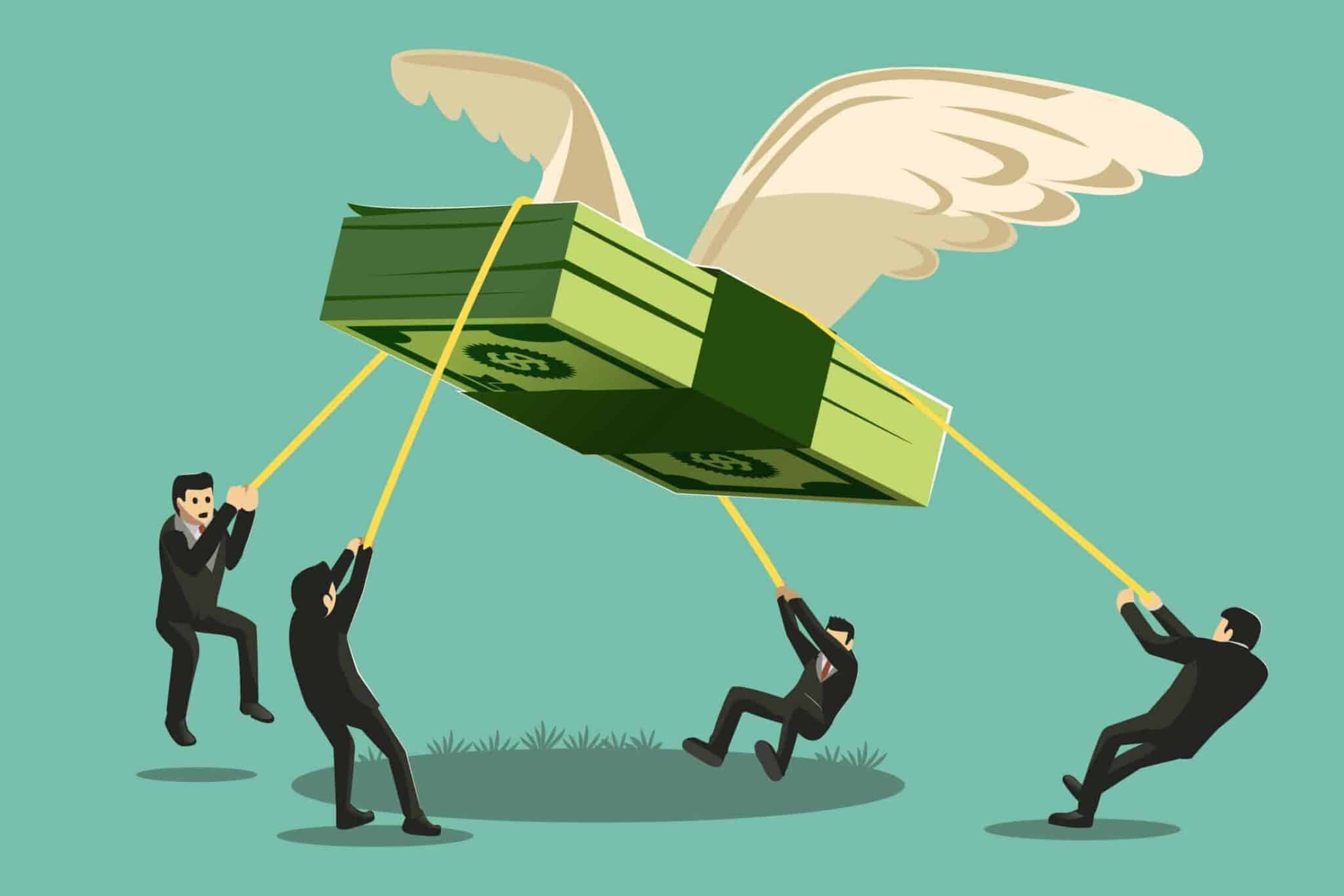The term inflation refers to the decline in the value of the local currency at the same time that prices rise continuously and gradually on all goods and services. The monetary currency of the state In the short term, its effects will be lighter on the economy. Despite that, there is a type of inflation that is required to be achieved to reach a healthy percentage of economic growth. Just as there are negative effects of inflation, there are also positive ones. Not all effects of inflation are negative, and the effects vary. Depending on the different types of inflation as well as with regard to the causes, the causes that lead to a certain type of inflation differ from the causes that lead to another type, and the most important reasons that lead to the occurrence or increase of inflation will be discussed.
What are the causes of inflation?
The reasons for the increase in inflation vary according to the type of inflation. There are two types of inflation: attraction and demand inflation and cost-push inflation, and the following is a detail for each of them:
Demand-Pull Inflation
This type of inflation occurs when a lot of cash is available to the public, whether consumers or investors, in a way that leads to an increase in the desire to spend and buy more goods and services. There are many reasons for increased income and spending, as shown below:
Economic growth
Individuals’ confidence increases in cases of prosperity, so there are many jobs because of the profits achieved by business institutions, which aim to increase productivity, and therefore there is more job security, and individuals tend to spend and consume, and on the contrary, in cases of economic decline, there is less job security for longer periods of time. Prosperity and unemployment rates rise, so the employee becomes more careful with spending for fear of ending his work and not getting another job, so the percentage of spending decreases and these funds tend to be saved to face future risks.
Consumer expectations
In cases of inflation, prices rise frequently, and the idea of buying goods and services at this time becomes better than the later time before the inevitable increase in their price occurs, so consumers increase spending and purchase in larger quantities, which increases demand dramatically.
Credit expansion
The growth of people’s confidence in the economy, the decrease in purchasing power, or the reduction in the restrictions placed by banks on granting credit lead to individuals borrowing significantly, which in turn leads to an increase in loans granted, which in turn leads to a significant growth in the money supply that makes companies look at it. As an expected increase in demand, it raises the prices of its products and services because the increase in demand means that consumers have an additional ability to purchase these goods at higher prices than they were.
Increase the money supply
The growth in the money supply increases dramatically due to the expansionary policies of the Central Bank, which makes purchases in the open market and pumps money into the economy, in addition to the existence of facilities for granting credit, so that individuals have greater amounts of money as a result of the increase in the money supply, which ultimately stimulates demand.
Financial stimulus
These incentives appear through the expansionary fiscal policies that governments implement by reducing tax rates and increasing government spending. The reduction in tax rates increases money for consumers by reducing the tax that is paid to the government in exchange for a certain commodity, so consumers buy that commodity. Another is the amount of the tax cut that was obtained on the first commodity, as well as the spending made by governments, especially in cases of direct spending on individuals, such as unemployment allowances, support for poor families, and pensioners’ salaries, providing them with more money that is spent in the economy in the form of consumption or investment, and all of this will lead Ultimately, the demand will increase.

Cost-Push Inflation
As for cost-push inflation, it arises when the supply of goods and services decreases in a way that leads to a shortage of these goods compared to the required quantities. Producers increase the prices of these goods and services due to the increase in demand for them and their limitations in the market. There are many factors that lead to a decrease in the supply of these goods and services, and the following is an explanation of the most important of these factors:
Currency exchange rates
The exchange rate factor is important when there are many industries that require obtaining raw materials from outside the country to complete their production. For example, if the exchange rate of the dinar decreases against the price of the Turkish lira, the cost of importing goods will rise, and the goods to be purchased will cost a certain amount of dinars. Previously, more dinars were required today to buy the same commodity with the same number, and this led to an inflation in the prices of commodities intended for consumption, because the exchange rate increased the cost of manufactured commodities, and the price of this commodity will certainly increase due to the high cost or because of the manufacturers’ reluctance to purchase the raw materials that enter into the components of the commodity, and this led to a shortage in the supply of this commodity.
Rising prices of production inputs
The rise in the prices of raw materials that are used in the production of goods such as plastic, glue, ink, iron, or any other input such as the increase in the prices of electricity, fuel, water, workers’ wages, or rents leads to an increase in the cost of producing goods, which leads to an increase in the prices of these goods by an amount commensurate with the increase in cost.
Wage inflation
In cases of economic prosperity, there is a significant decrease in unemployment rates, in addition to a major crisis in the recruitment of competencies. Everyone has a job, and in order to attract a person with high efficiency, it is necessary to increase the amount of the offered salary to be able to attract employees, where the wages of workers are one of the inputs of manufactured goods, as well as The increase in wage rates will lead to an increase in the cost of manufactured goods, which in turn will lead to an increase in the prices of these goods.
Natural disasters
The occurrence of natural disasters such as earthquakes, volcanoes, floods, and hurricanes leads to a sudden rise in the prices of goods, as the price tends to decrease in these disasters, but over a long period, because if a hurricane destroys agricultural crops, for example, or destroys a clothing factory or any other commodity, it will cause damage. In these commodities, the commodity supply has decreased significantly compared to the demand for these commodities.
Monopoly
It is one of the most important reasons for the decrease in the commodity supply, and it has many types. For example, monopoly occurs when a company or group of companies controls the market for a specific commodity. The company or companies are given the advantage of determining the price of the commodity because there is no other party to sell it, and all of this depends on the type of commodity. The commodity was necessary, and there was no substitute for it, so the prices of this commodity could be controlled, while the prices of luxury commodities that had alternatives were difficult to control and influenced to rise.
Taxes
There are many types of taxes imposed by the government that affect the prices of goods and services, such as sales taxes, customs duties, etc. When the government imposes a tax on a particular commodity or increases the tax rate on a particular commodity, it increases the cost of goods prepared for sale, so merchants and sellers usually load and transfer this cost to customers by increasing the prices of these goods. It depends on the type of commodity; if it is a luxury good, the merchant may not bear the customer’s share of this cost because the customer will simply refrain from buying it; on the contrary, when the commodity is necessary, the merchant will charge the cost to the customer because there are no other alternatives to replace it.
Low productivity
The decrease in productivity increases the rates of inflation, as it directly affects the commodity supply. When productivity decreases, the commodity supply decreases, so the price of these commodities rises when the supply drops to a certain point in exchange for the demand for this commodity. There are many reasons that lead to a decrease in productivity, such as employee dissatisfaction with the environment, labor shortages, machinery and equipment used in production, and an increase in the number of employees in companies operating in sectors that are not characterized by economies of scale.
Read also: The importance of human resource management



